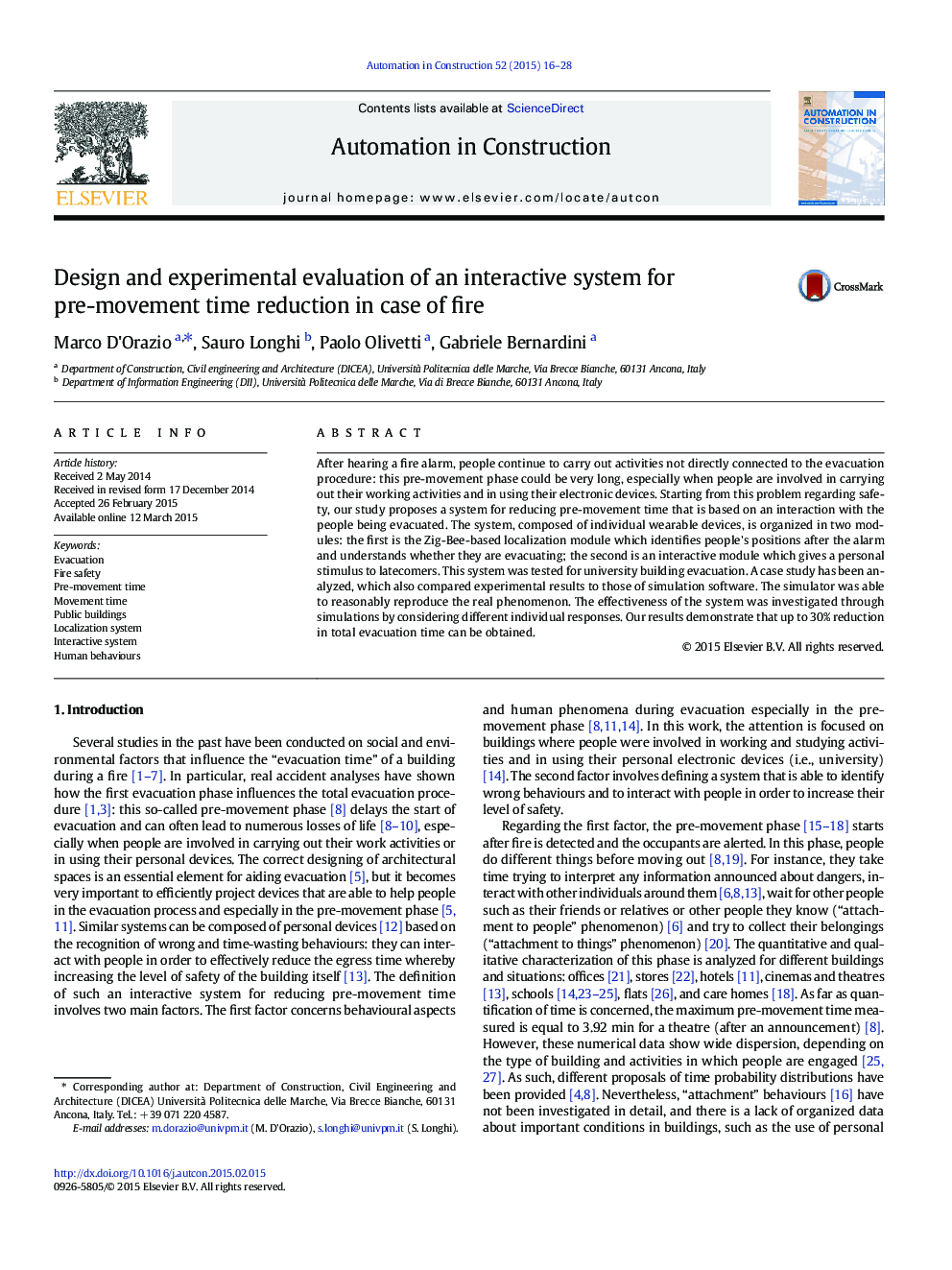| Article ID | Journal | Published Year | Pages | File Type |
|---|---|---|---|---|
| 246398 | Automation in Construction | 2015 | 13 Pages |
•An interactive wearable system for reducing pre-movement time is designed.•University fire evacuation in case of personal electronic devices use was explored.•Pre-movement behaviours in evacuation are experimentally defined.•A simulator capability to reproduce the experimental phenomena is checked.•Our system obtained up to 30% reduction in evacuation time during simulations.
After hearing a fire alarm, people continue to carry out activities not directly connected to the evacuation procedure: this pre-movement phase could be very long, especially when people are involved in carrying out their working activities and in using their electronic devices. Starting from this problem regarding safety, our study proposes a system for reducing pre-movement time that is based on an interaction with the people being evacuated. The system, composed of individual wearable devices, is organized in two modules: the first is the Zig-Bee-based localization module which identifies people's positions after the alarm and understands whether they are evacuating; the second is an interactive module which gives a personal stimulus to latecomers. This system was tested for university building evacuation. A case study has been analyzed, which also compared experimental results to those of simulation software. The simulator was able to reasonably reproduce the real phenomenon. The effectiveness of the system was investigated through simulations by considering different individual responses. Our results demonstrate that up to 30% reduction in total evacuation time can be obtained.
